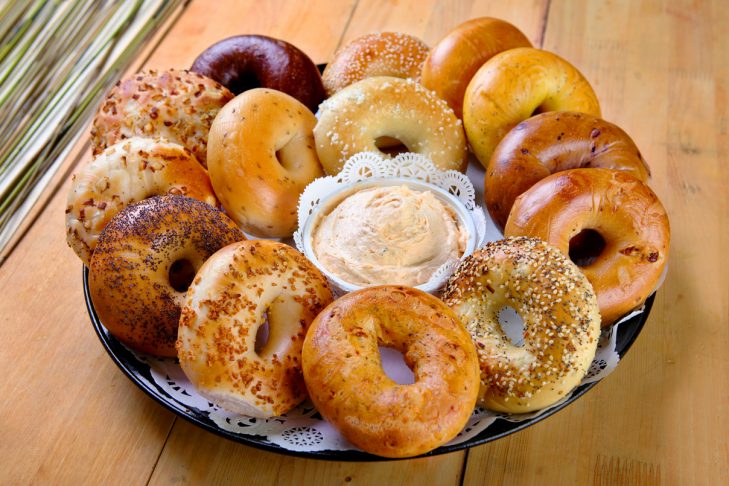When I teach cooking classes, I often start class by asking one of two questions: (1) “What is your earliest food memory?” or (2) “What is your spirit bagel and shmear?” I love asking these questions because, while very different in content (and humor), they both not only set the stage for class conversations about Jewish food history, but also immediately personalize the connection between food and identity that is so crucial to the classes I teach. The answers always surprise and delight; they include funny bagel (or for the gluten-free among us, non-bagel) combinations, as well as poignant memories of food shared with loved ones.
While I can readily answer the second of my questions (depending on my mood, “a raisin bagel with egg salad” or “an everything bagel with plain cream cheese, lox and a tomato”), it’s much more difficult for me to answer the first. I can’t really recall the first moment that food came to the fore of my consciousness because food has always been an essential part of my home, my family life and my identity. For me, the vision of my family eating together, sitting at the cloth-clad circular dining table inherited from my grandmother, has been a constant—a memory so consistent that it ceases to be any one discrete moment; rather, it acts as a continuous thread stringing together my past self and my present being. Images of daily and festive meals mingle with the familiar sight of my mom tossing her famous salad with her well-worn, dressing-infused wooden spoons or of my dad joyfully flipping pancakes on the cast-iron griddle that’s older than me. These snapshots immediately come to mind when I attempt to answer my own icebreaker, each a testament to how central food has been not only to my family life, but also to who I am.
-
It’s these memories that compelled me to study Jewish food, specifically the culinary heritage of the Sephardic Jews. Not only for the Sephardic Jews, whose roots go back to medieval Spain, but also for global Jewish communities, food has long been a means to express everything from festive joy to communal sadness, to mark the Jewish community’s difference and underscore its assimilation. Indeed, as Jewish food historian Gil Mark (z”l) explains in his “Encyclopedia of Jewish Food,” “no other aspect of existence more closely touches and reveals a community’s life—both its everyday routines and its periods of celebration—than food.” In other words, food has helped Jewish communities throughout time and place express who they are, both in relation to the world around them and in relation to other Jewish communities. By exploring in their dishes and under their pot lids, we can understand so much more about these global Jewish communities and, in so doing, ourselves.
It is for all these reasons I’m so excited to be teaching a cooking class this summer as part of Eser’s Maker Mishkan series, called “Cooking Your Jewish Customs.” Over the course of six weeks, we’ll explore the diverse Jewish diasporic kitchens, tasting as we go and learning all about the flavors and recipes that constitute Jewish food. I hope you consider joining me this July and August for a delicious class—and I can’t wait to hear about your spirit bagel, too.
Interested in taking a summer class but don’t want to cook? Never fear! We also have options for a woodworking class and an embroidery class. Through hands-on crafts, you’ll have the opportunity to explore new activities, develop your Jewish identity and build new connections in your community. Each course consists of six hands-on and text-based class sessions. Pick a craft and explore how it can be part of your Jewish journey!
Never miss the best stories and events! Get JewishBoston This Week.
This post has been contributed by a third party. The opinions, facts and any media content are presented solely by the author, and JewishBoston assumes no responsibility for them. Want to add your voice to the conversation? Publish your own post here.
MORE




